Invented by Gale W. Newman, Sam Anyanwu, Morehouse School of Medicine Inc
Exosomes are small extracellular vesicles that are released by cells and contain various biomolecules, including proteins, nucleic acids, and lipids. These vesicles play a crucial role in intercellular communication and have been found to be involved in the pathogenesis of various diseases, including hepatitis virus infections. Recent research has shown that exosomes derived from infected cells carry viral components, such as viral RNA or proteins, making them potential biomarkers for the detection and monitoring of hepatitis virus infections.
The market for exosome-mediated diagnostics of hepatitis viruses is expected to witness significant growth in the coming years due to several factors. Firstly, the increasing prevalence of hepatitis virus infections worldwide is driving the demand for more accurate and efficient diagnostic tools. According to the World Health Organization (WHO), an estimated 325 million people globally are living with chronic hepatitis B or C, which can lead to severe liver diseases, including cirrhosis and liver cancer. Early detection and monitoring of these infections are crucial for timely intervention and improved patient outcomes.
Secondly, exosome-mediated diagnostics offer several advantages over traditional diagnostic methods. These include higher sensitivity and specificity, as exosomes carry viral components that are directly derived from infected cells. This allows for the detection of low viral loads and the differentiation between different hepatitis virus genotypes, which is important for personalized treatment strategies. Additionally, exosome-based diagnostics can be non-invasive, as exosomes can be isolated from various body fluids, such as blood, urine, or saliva. This eliminates the need for invasive procedures, such as liver biopsies, which can be costly and associated with potential complications.
Furthermore, the advancements in exosome isolation and characterization technologies have significantly contributed to the growth of this market. Various methods, such as ultracentrifugation, size-exclusion chromatography, and immunoaffinity capture, have been developed to isolate exosomes from complex biological samples. Moreover, the development of sensitive and specific detection methods, such as PCR-based assays or proteomic analysis, has enabled the accurate quantification and profiling of exosomal biomarkers.
Several companies and research institutions are actively involved in the development of exosome-mediated diagnostics for hepatitis viruses. These include both established players in the diagnostics industry and emerging startups. For example, Exosome Diagnostics, a leading company in the field of exosome-based diagnostics, has developed an exosome-based liquid biopsy platform for the detection of various diseases, including hepatitis virus infections. Similarly, Codiak Biosciences, a biotechnology company, is developing exosome-based therapeutics and diagnostics for various diseases, including liver diseases.
In conclusion, the market for exosome-mediated diagnostics of hepatitis virus infections and diseases is witnessing rapid growth due to the increasing prevalence of these infections and the need for more accurate and efficient diagnostic tools. Exosome-based diagnostics offer several advantages over traditional methods, including higher sensitivity and specificity, non-invasiveness, and the potential for personalized treatment strategies. The advancements in exosome isolation and characterization technologies have further fueled the growth of this market. With ongoing research and development efforts, exosome-mediated diagnostics hold great promise for improving the diagnosis and management of hepatitis virus infections.
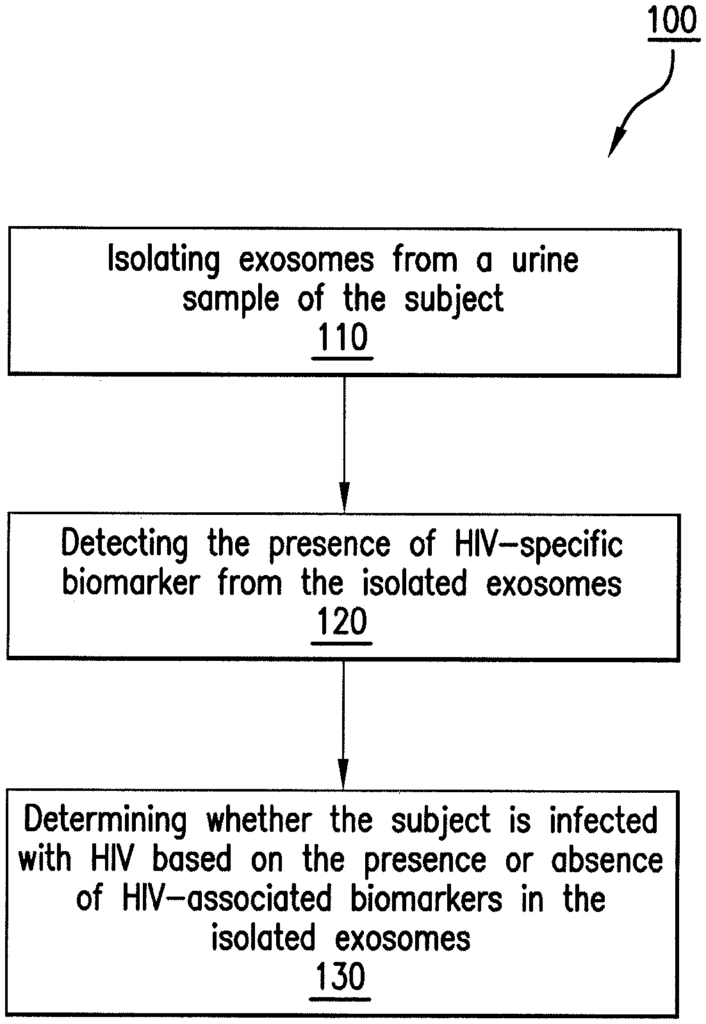
The Morehouse School of Medicine Inc invention works as follows
A method is disclosed for diagnosing hepatitis infection or a disease condition caused by hepatitis viruses based on biomarkers associated with hepatitis viruses present in exosomes of a body fluid sample taken from the subject. A method is disclosed for monitoring the progression of a viral infection or disease condition, and for monitoring effectiveness in treating a patient with an antihepatitis agent.
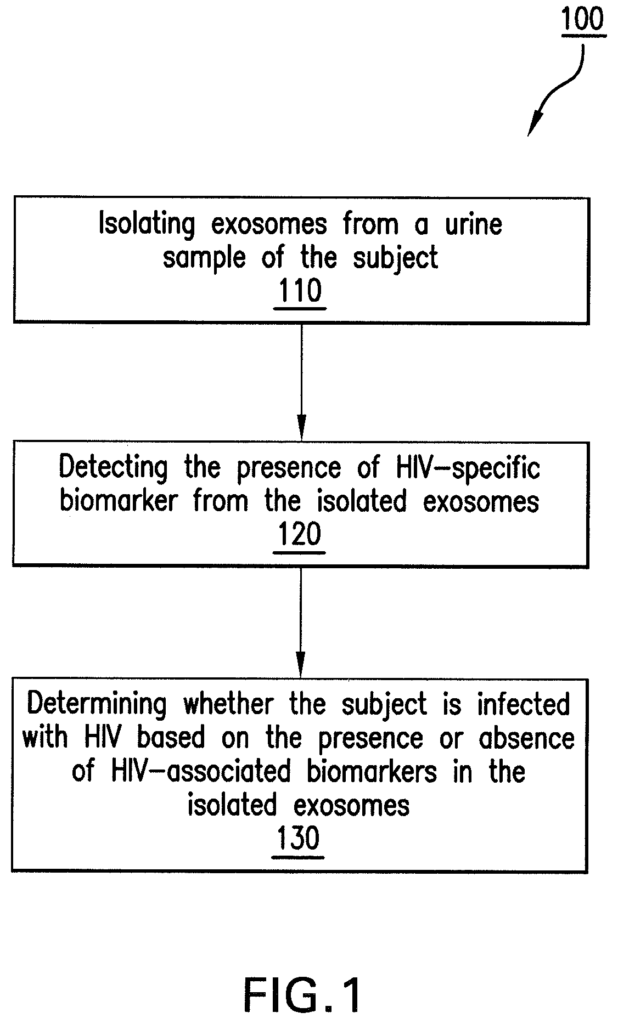
Background for Exosome-mediated diagnostics of hepatitis viruses infections and diseases
Exosomes, which are small vesicles of 40-100nm diameter secreted by different cell types to communicate with other cells through the proteins and ribonucleic acid they contain. Exosomes are created intracellularly by a segment of cell membrane that spontaneously invades and is endocytosed. The internalized segment of the membrane is then broken down into smaller vesicles, which are then expelled from cell. The vesicles are released from the cell when the late endosome fuses with cell membrane. “The vesicles, or exosomes as they are known once released, consist of a lipid-raft embedded with ligands that were originally found on the cell membrane.
Exosomes can carry unique profiles of nucleic acid and/or proteins (such as miRNAs), depending on their origin. These exosomes can activate signaling pathways and/or transfer products to other cells through exosomal fusions with plasma membranes. Exosomes have a different protein composition than other organelles such as early endosomes, plasma membranes and multivesicular body (MVBs).
Exosomes are released by different cell types under diverse physiological conditions. Exosomes released by B lymphocytes, for example, carry class II major Histocompatibility Complex molecules that play a part in antigenic display. Dendritic cell exosomes are produced (i.e. dexosomes Dex) and play an important role in the immune response, especially in the stimulation of cytotoxic T-lymphocytes. Texosomes are exosomes that contain tumor antigens. They can be secreted by some tumor cells in a regulated way. Exosomes can also contain pathogen-associated substances. Exosomes, for example, have been found to contain products from Mycobacterium gondii and Toxoplasma tuberculosis-infected cell.
HIV or hepatitis viruses are frequently detected using serum or plasma. Western blots are used to confirm the detection of specific viral antibodies as presumptive proof of an infection. To determine the amount virus in circulation, RT-PCR or p24 antigen detection can be used. CD4/CD8 ratios, immune function tests and other immune function test are frequently used to monitor immune state and progression towards AIDS. HIV tests that use saliva or epithelia in the mouth were developed more recently. Currently, there are only a few tests that can measure viral antibodies or antigens in urine. The detection of HIV/hepatitis protein in urine could provide a faster method to detect HIV/hepatitis virus infection and/or monitor disease progression, especially viral-associated kidney complications.
Hepatitis, or liver inflammation, is most often caused by a virus infection. There are five types of hepatitis virus, A, B C, D, and E. Ingestion of contaminated water or food is the most common cause for hepatitis A. Hepatitis A, B, C, and D are usually caused by parenteral exposure to infected fluids. Hepatitis C is also spread by sexual contact.
Hepatitis A (HAV), an enterically transmissible viral disease, causes jaundice, nausea, vomiting, malaise and fever. HAV is usually acquired through the fecal oral route. This can be done by person-to-person contacts, ingestions of contaminated water or food, or pooled plasma. HAV is resistant to heat treatment and physicochemically inactivation because it lacks a lipid-based envelope. “The development of sensitive, specific and accurate diagnostic tests to identify HAV antibodies and/or antigens in infected persons as well as nucleic acids-based tests to detect viremic blood samples and exclude them from transfusion is an important public challenge.
The Hepatitis B Virus (HBV), which infects people, can have two different clinical outcomes. In 90-95% of adult clinical infections, the virus is cleared within a few weeks or months and the patient gains a lifetime immunity to re-infection. In the remainder of cases, the virus remains in the tissues and the patient is chronically ill. Chronic infection can have serious consequences: the patient is more likely to experience scarring in the liver tissue, cirrhosis (and possibly hepatocellular cancer), and eventually scarring. HBV can be transmitted through infected body fluids such as blood, saliva, and semen. This includes during sexual activity or delivery.
Worldwide, 400 million people have chronic hepatitis B (HBV) infection. CHB infection, which is a chronic hepatitis B virus (CHB), is the leading cause of liver cirrhosis (HCC) and hepatocellular cancer (HCC), causing an estimated 500,000 to 900,000. “Continued HBV replication increases risk of progression into cirrhosis or HCC.
Hepatitis C (HCV), the causative agent of a chronic liver infection that was originally diagnosed as non-A and non-B Hepatitis, is now known to be the cause. HCV infected approximately four million Americans and 170 millions worldwide. This is four times more than HIV, and 90-95% of hepatitis cases are attributable blood transfusions. The primary way of infection is believed to be through contact with bodily fluids contaminated by infected people, particularly blood. HCV infection is a major cause of liver transplantation both in the United States as well as other countries. In the United States, HCV infection is responsible for 40-50% liver transplants. The disease can progress to chronic liver damage. The HCV virus can be found in peripheral blood lymphocytes as well as the liver.
The hepatitis Delta Virus (HDV)” is a satellite virus that relies on the hepatitis B antigens for its envelope assembly and to form new virions in order to spread infection. HDV is the smallest human virus with a genome of 1.7 Kb. HDV, however, is the most severe type of viral hepatitis. Acute HDV infection, when compared to other viral hepatitis agents, is associated more with fulminant liver disease, which is a rapidly progressing, and often fatal, form of the illness in which large amounts of liver tissue are destroyed. Chronic type D liver disease is characterized by necroinflammatory hepatitis, which is similar to chronic HBV, but it is more severe and often progresses quickly to cirrhosis or liver failure. This is why chronic HDV infection is disproportionately associated with terminal liver diseases. HDV affects less people than HBV, but the acute or chronic liver disease that results is often a reason for liver transplantation both in Europe and North America. Around 70,000 Americans are affected by chronic HDV disease. According to the Centers for Disease Control, HDV infection is responsible for 1,000 deaths per year in the U.S.
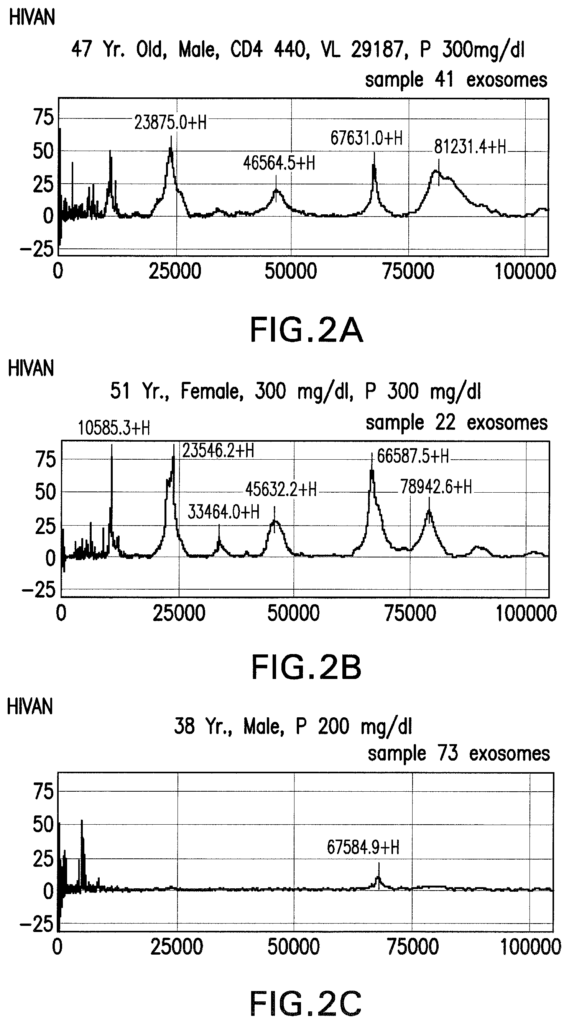
The need for reliable, rapid and cost-effective diagnostic tests to diagnose infectious diseases and agents is evident in the large number of people affected by these agents.
The present application is concerned with a method of diagnosing hepatitis infection or disease caused by the hepatitis viral. This involves: (a), preparing an exosome using a sample of bodily fluid from the subject; (b), contacting the exosome with one of more hepatitis-associated biomarker-binding agent(s), selective for the hepatitis viruses, and/or one or several detection reagents suitable for detecting the one or two hepati
In a preferred embodiment the bodily liquid is urine.
In some embodiments the exosome preparation consists of whole exosomes. In some embodiments, an exosome-lysate is used as the exosome preparation.
In one embodiment, the virus that causes hepatitis is HAV. In a second embodiment, the hepatitis is HBV. In another embodiment, the hepatitis is HCV. In a different embodiment, the hepatitis is HDV. “In yet another embodiment the hepatitis is HEV.
In certain embodiments, contacting step (b), further includes contacting each of a plurality exosome preparations using one or more different biomarker-binding agents. In certain embodiments, the hepatitis viral biomarker-binding agent is specific for a single hepatitis type. In some embodiments, the hepatitis viral biomarker-binding agent is specific for a particular hepatitis. In some embodiments, biomarker-binding agents are selective only for HAV.
In some embodiments step (b), which comprises contacting the prepared exosome with one of more detection reagents that are capable of detecting a biomarker associated with hepatitis, is comprised of selecting one of more reagents to reverse-transcribe RNAs, or one of more PCR reagents used for amplification of genomic nucleic acid or mRNAs or one of more oligonucleotides designed for detecting microRNAs.
In certain embodiments, the step (b), which comprises contacting the exosome preparation, with one or two hepatitis-associated biomarker-binding agent(s) as well as one or several detection reagents suitable for the detection of one or multiple hepatitis-associated biomarkers is a contact between the exosomes and the binding agents. The detection reagents can be selected from the following: miR-1274a; miR-1374a; miR-14
In other embodiments, step (b) comprises contacting one or more exosome preparation with one or more agents capable of detecting liver damage and/or hepatocellular carcinoma selected from the group consisting of CD10, CD26, CD81, AST, ALT, ?-fetoprotein (AFP) and its various isoforms, including AFP-L1, AFP-L2, AFP-L3, AFP-P4, AFP-P5 (E-PHA), and monosialylated AFP; des-carboxyprothrombin (DCP), ?-1-fucosidase (AFU), ?-glutamyl transferase, glypican-3 (GPC-3), squamous cell carcinoma antigen (SCCA), golgi protein 73 (GP73) and mucin 1 (MUC-1), 14-3-3 gamma, alpha-1-fucosidase, gamma-glutamyl transferase, glypican-3, squamous cell carcinoma antigen, protein C (PROC), retinal binding protein 4 (RBP4), alpha-1-B glycoprotein (A1BG), alpha-1-acid glycoprotein (AGP), Mac-2-binding protein (M2BP), complement Factor H (CFH), insulin-like growth factor binding protein acid labeled subunit (IGFALS) and combinations thereof.
The exosome preparation can be prepared using any exosome separation procedure, including differential centrifugation (DC), nanomembrane Ultrafiltration (NMU), immunoabsorbents, size-exclusion Chromatography, ultracentrifugation (UC), magnetic activated cells sorting(MACS), and combinations thereof.
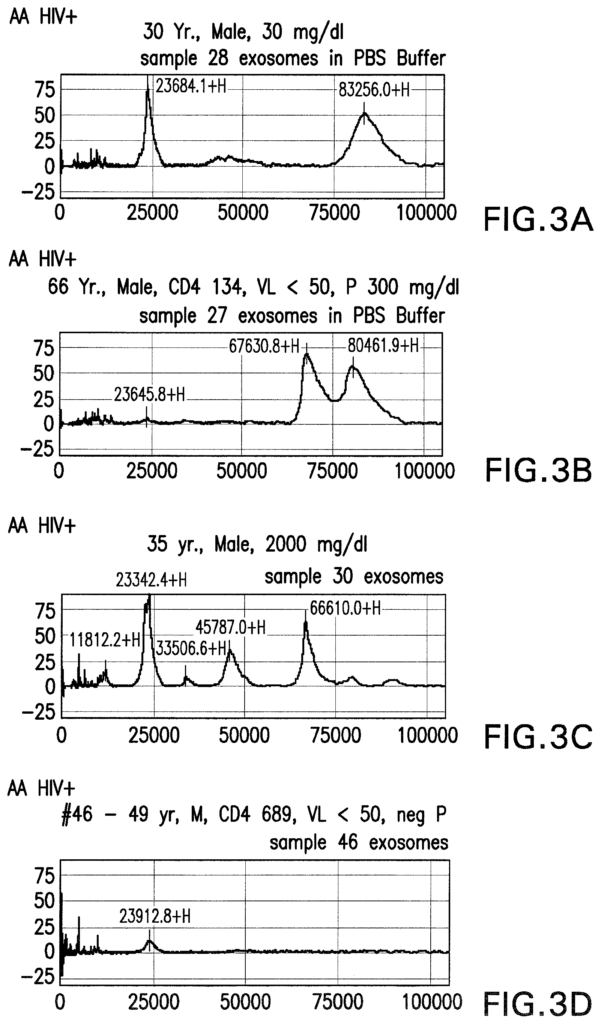
In certain embodiments the diagnosis step may be coupled with the administration of a therapeutic hepatitis drug to the subject or the collection of a liver biopsied from the subject. “Any conventional therapeutic drug for the hepatitis can be used.
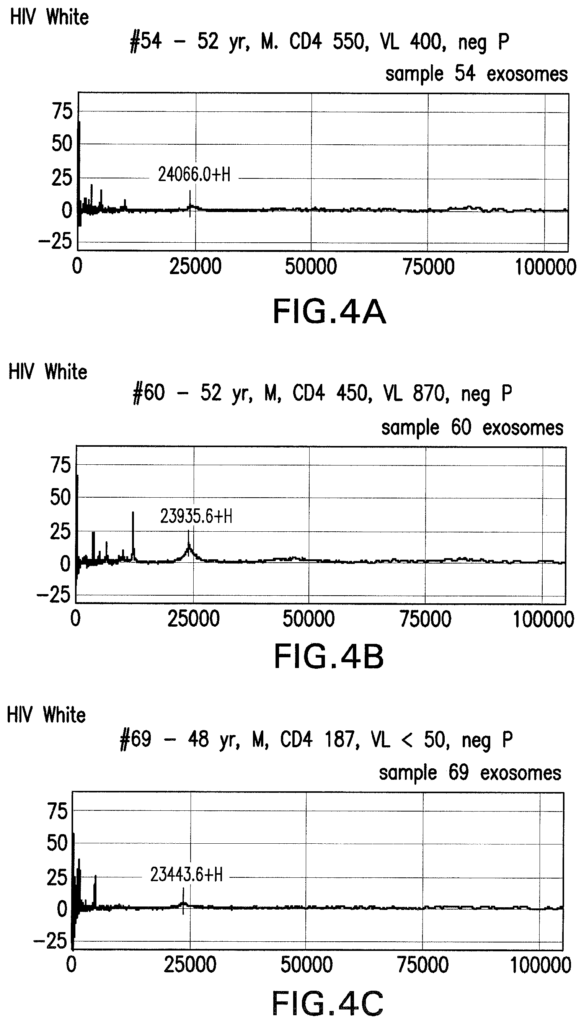
Click here to view the patent on Google Patents.
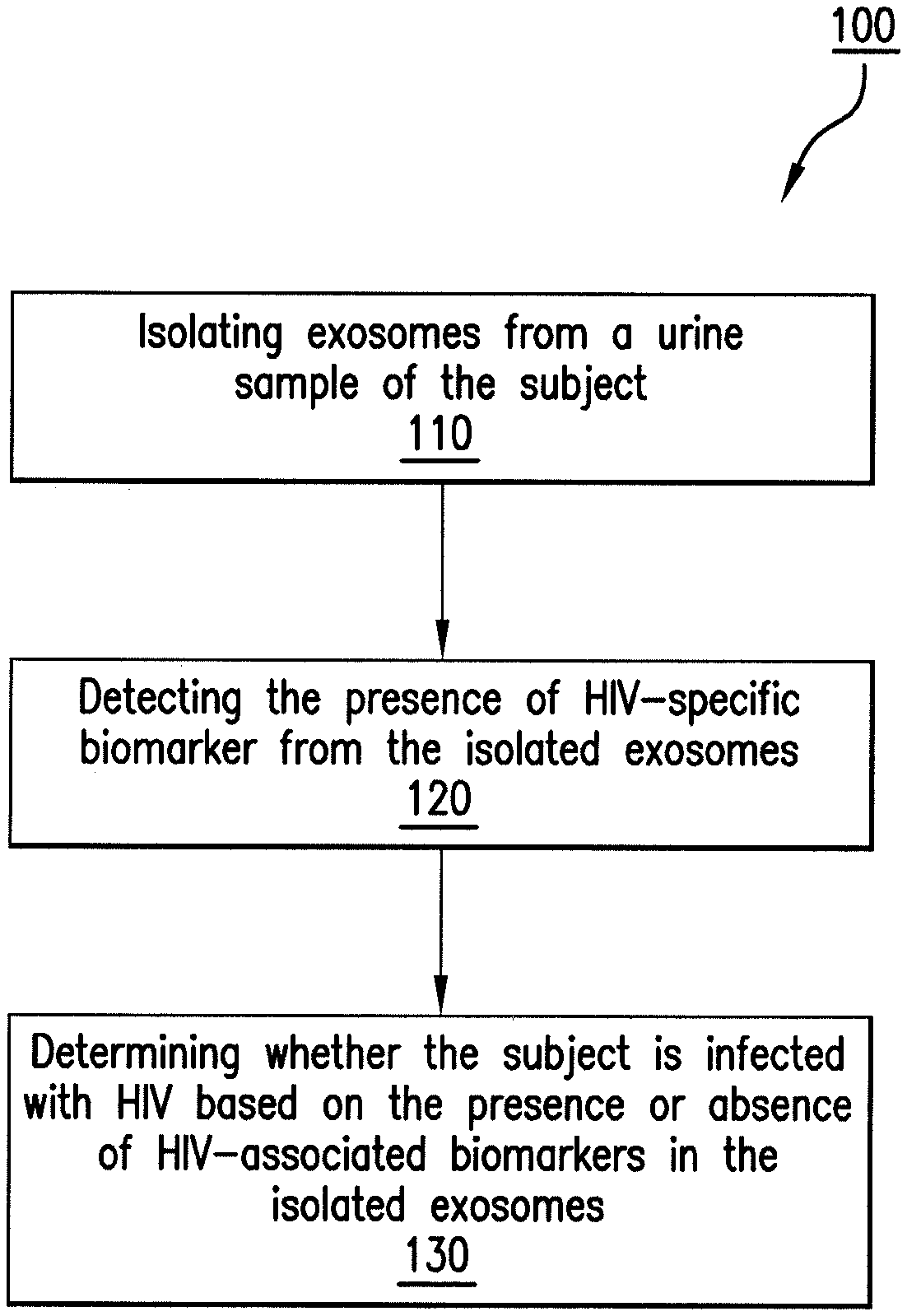
Leave a Reply